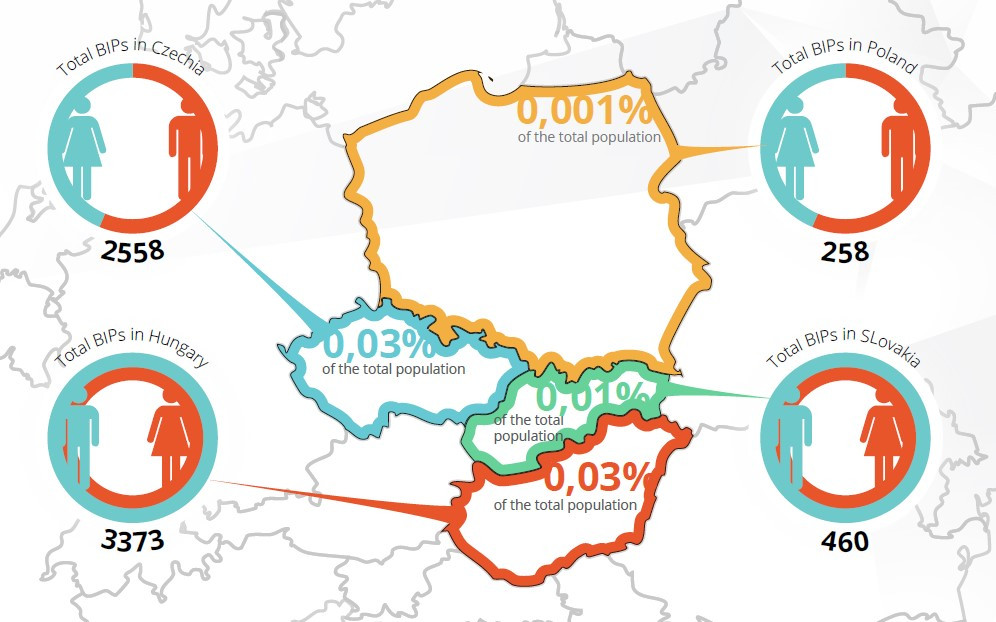Refugees in the V4 countries in numbers and context
Published: Feb 12, 2018 Reading time: 2 minutes Share: Share an articleThey make a maximum of 0.03 percent of the population, their application is going under complex and long-term process, and domestic residents hold mostly negative feelings towards them: meet the asylum seekers in Poland, Slovakia, Hungary and Czech Republic collectively known as the Visegrád countries. These countries also share their rejection towards quotas for the redistribution of refugees from Italy and Greece. However, if we compare statistics about the numbers of asylum seekers and the way states are dealing with them, there are many differences between these four countries.

Four NGOs from Visegrád countries are presenting a comparative report full of statistical data about asylum seekers, their admissions and attitudes towards them in the Visegrád countries. Besides basic statistics, the report informs about the legal framework on refugee reception and integration policy in each country. We also compared the public attitudes to immigration using data from the standard Eurobarometer. The results confirm that residents from the V4 countries’ are Europeans, who are mostly reluctant towards all kinds of immigration. Besides that, the report summarized the approach to the quota system for redistribution of asylum seekers in the V4 countries.
One of the most interesting findings is that the group of asylum seekers in each V4 country consists of very different nationalities. While Ukrainians make the largest group of asylum seekers in the Czech Republic, three quarters of all asylum seekers in Poland are Russians. Only in Hungary, half of the asylum seekers comes from the Middle East - Afghans and Syrians. In Slovakia, the composition of asylum seekers’ nationalities is quite diverse and balanced in numbers.
The report focuses also on the specifics of each country. In the Czech Republic, the focus lies on the detention of minors, Slovakia is presenting the story of the evacuation center in Humenné. Hungary describes its restrictive asylum policy since 2015, which came after the dramatic increase in the number of asylum seekers (177 135), which culminated in building a fence along the southern border. The year 2015 was also important in Poland, when migration became a political issue during presidential and parliamentary elections.
Download:
• Comparative report: Asylum seekers and beneficiaries of international protection in V4 countries
Comparative reports in other languages (Czech, Polish, Hungarian and Slovak) are free to download here
The publication was financed through the EU’s Asylum, Migration and Integration Fund under the project “NIEM: National Integration Evaluation Mechanism. Measuring and Enhancing the Integration of Beneficiaries of International Protection”, through the International Visegrad Fund under the project “V4NIEM: Visegrad Countries National Integration Evaluation Mechanism” and through the Open Society Foundations.
Further information: www.forintegration.eu



